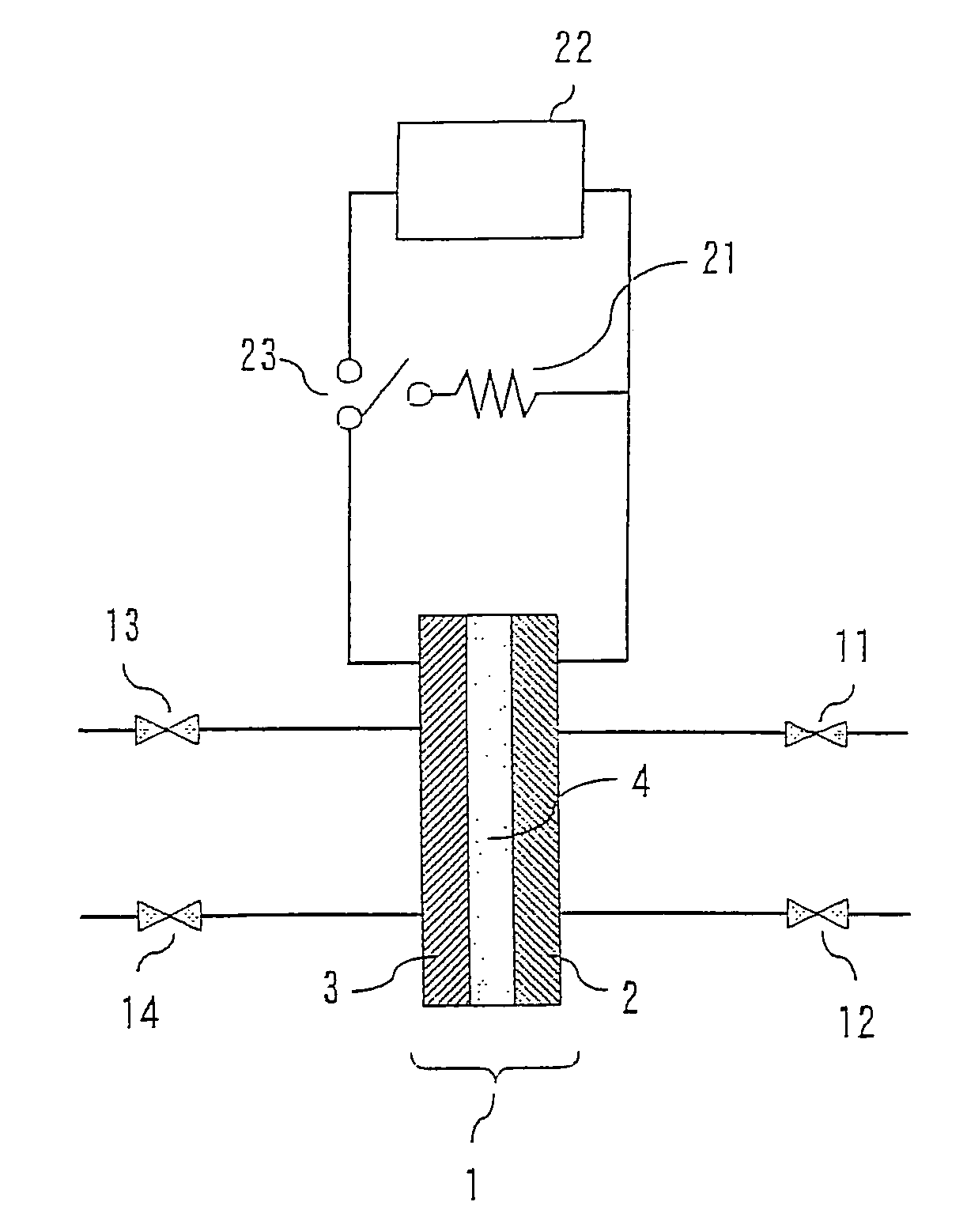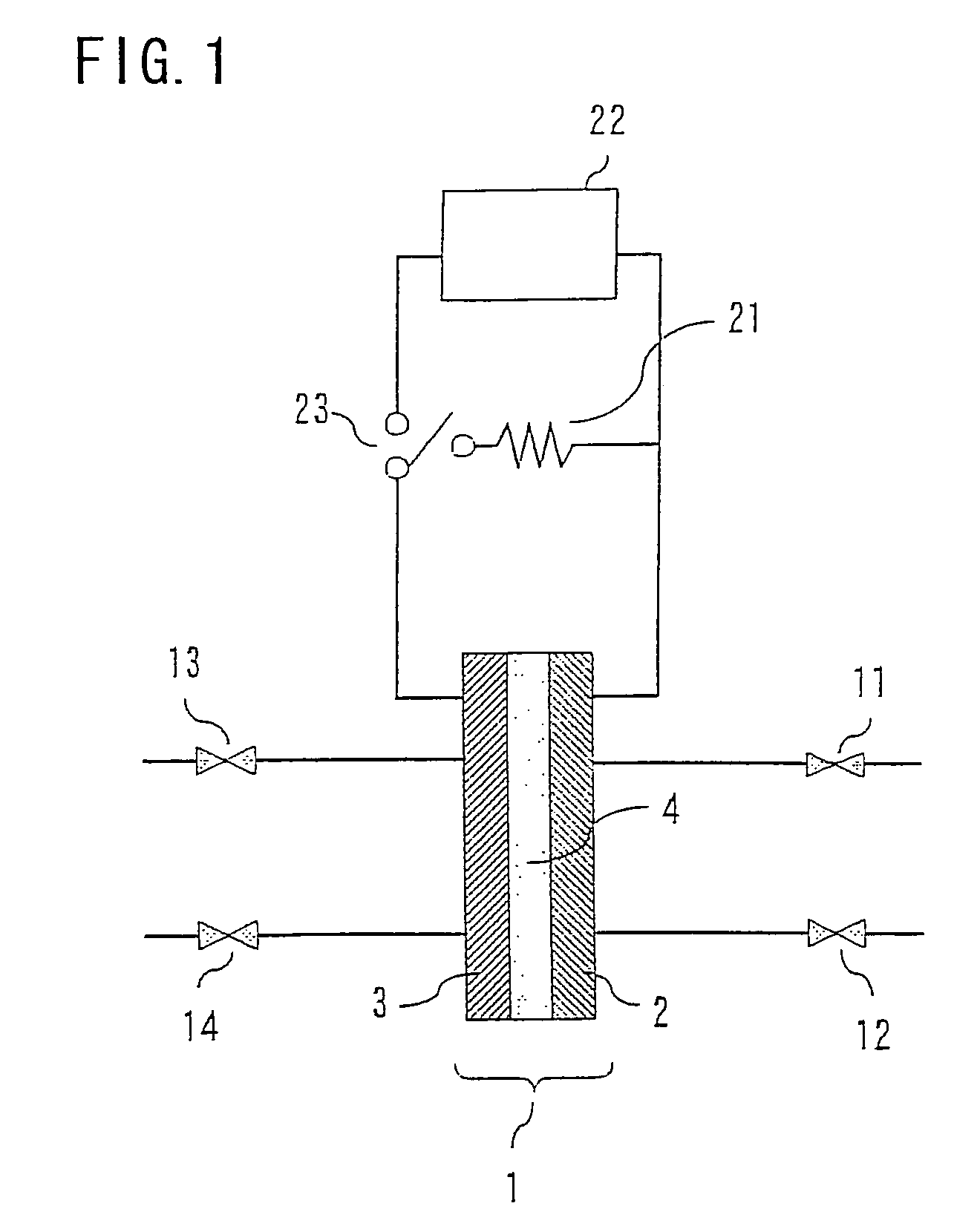Method of operating fuel cell
a fuel cell and fuel cell technology, applied in the field of fuel cell operation, can solve the problems of deterioration of fuel cell performance, increased equipment size, and higher manufacturing cost, and achieve the effects of simple and inexpensive, restoring normal performance, and increasing the power rating of system components
- Summary
- Abstract
- Description
- Claims
- Application Information
AI Technical Summary
Benefits of technology
Problems solved by technology
Method used
Image
Examples
examples
[0036]Table 1 shows the results of experiments conducted to evaluate the fuel cell performance in terms of voltage drop ratio per operating cycle observed when the fuel cell power generating system of the invention was repeatedly run and stopped 100 times with varying durations of startup phase operation (during which the potential difference between the two electrodes 2, 3 was maintained at 0.1 V or less with the two electrodes 2, 3 interconnected). Referring to Table 1, the duration of the startup phase operation was 1 minute or more in Example 1, 10 seconds or more in Example 2, 1 second or more in Example 3, less than 1 second (approximately 0.5 second) in Comparative Example 1, and 0 seconds in Comparative Example 2. The experimental results indicate that the voltage drop ratio was the lowest in Example 1 and relatively low in Examples 2 and 3, whereas Comparative Example 2 (in which the startup phase operation was not performed) exhibited a maximum voltage drop ratio. While th...
PUM
| Property | Measurement | Unit |
|---|---|---|
| electrode potential | aaaaa | aaaaa |
| oxidation reduction potential | aaaaa | aaaaa |
| oxidation reduction potential | aaaaa | aaaaa |
Abstract
Description
Claims
Application Information
 Login to View More
Login to View More - R&D
- Intellectual Property
- Life Sciences
- Materials
- Tech Scout
- Unparalleled Data Quality
- Higher Quality Content
- 60% Fewer Hallucinations
Browse by: Latest US Patents, China's latest patents, Technical Efficacy Thesaurus, Application Domain, Technology Topic, Popular Technical Reports.
© 2025 PatSnap. All rights reserved.Legal|Privacy policy|Modern Slavery Act Transparency Statement|Sitemap|About US| Contact US: help@patsnap.com


